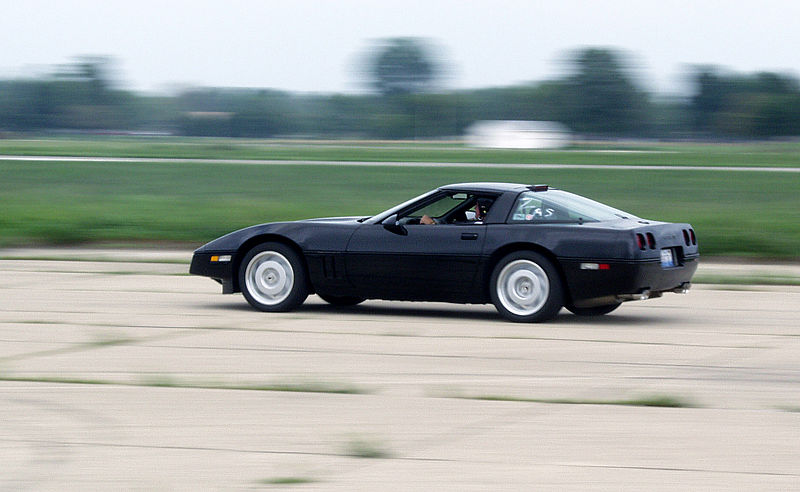 |
| Source: Drdisque via Wikimedia Commons CC BY 2.5/Shrunk from original size |
Overhead Valve (OHV), or otherwise known as 'Pushrod', is nothing new to the automotive world. The tech where the in-cylinder block camshaft actuates the in-cylinder head valves with a pushrod has been around since 1898 thanks to a man by the name of Walter Lorenzo Marr who was building a single cylinder trike with the OHV valvetrain. After a short stint at Buick as their Chief Engineer from 1901-1902, Marr founded his own car company, Marr Auto-Car Company, in 1903 and proceeded to dish out a handful of automobiles with OHV engine before returning to Buick in 1904.
Corvette line-up anomaly; in come Lotus
Marr's creation somehow survives until the present day on some sports cars. One of the sports car that still carries Marr's OHV tech is Chevrolet's 2 door sports car, the Corvette. From the C1 Corvette to the current C7 Corvette Stingray, OHV remains as the mainstay of Corvette's engine line-up, with one exception though. The C4 Corvette ZR-1 remains the only Corvette to buck the Corvette's OHV trend.
 |
| Source: Steven N. Severinghaus via wikipedia CC BY-SA 3.0 |
Tough beginning
GM discovered that the engine was rather finicky, in that it needed special assembly. This put GM on a backfoot in finding an assembly plant specific for the LT5. All hope was not lost as Mercury Marine, a specialty engine builder from Stillwater, Oklahoma, stepped in to assemble the engines and shipped it back to Bowling Green, Kentucky Corvette plant where the ZR-1 was being assembled. Thanks to Mercury Marine's generosity, the legendary LT5 was born along with the C4 ZR-1.
One heck of an engine for its time
The LT5 was based on the L98 V8 that powered the standard C4 Corvette. Owing to GM's target in creating the fastest production sports car, the L98 didn't fit the bill for the ZR-1. The 5.7 litre 250 hp 16v OHV L98 was later replaced by the more powerful and sophisticated-for-its-time LT5 V8 with the same 5.7 litre displacement, but with 32v DOHC setup.
Together with unique air management system that can shut off 8 of the 16 intake runners and fuel injectors at part throttle, the LT5 was good for a brilliant 375 hp from 1990-1992 ZR-1. ZR-1 manufactured from 1993-1995 was to enjoy a power hike to 405 hp courtesy of changes to the cam timing and more efficient engine porting.
It's all in the record
The performance of the LT5 didn't just award the C4 Corvette ZR-1 with a blistering 0-62 mph time of 4.4 seconds, but also enable it to set 3 world endurance speed records:
- 5000 km at 282.778 kph
- 8000 km at 279.69 kph
- 24 Hours Endurance at 283.059 kph for 6793.453 km
Thanks to factors such as increasing production cost and dwindling sales, the C4 ZR-1, along with the LT5, had a rather short lifespan as GM pulled its plug after model year 1995. In total, 6939 C4 ZR-1 were ever produced by GM.

